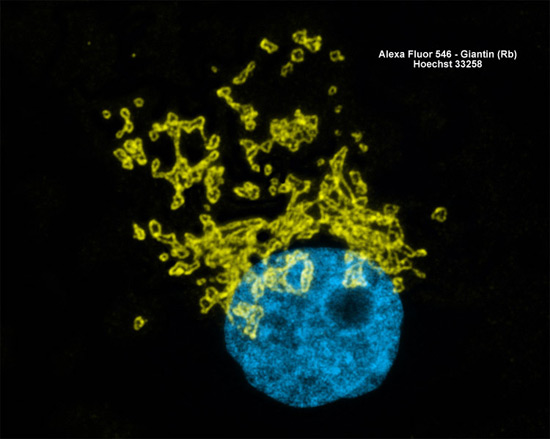The OMK monkey kidney cell line was derived from the tissue of a normal female adult owl monkey. The cell line is primarily utilized to propagate several non-human primate viruses to which the cells are susceptible, including herpesvirus aotus, herpesvirus saimiri, and herpesvirus ateles.
Owl Monkey Kidney Epithelial Cells

Giantin is a membrane-bound protein resident in the Golgi complex of mammalian cells. The monkey kidney cell culture (OMK line) featured in the digital image above was fixed, permeabilized, washed, and blocked with 10-percent normal goat serum in phosphate-buffered saline prior to immunofluorescent labeling with rabbit primary antibodies to giantin. The culture was subsequently stained with a mixture of secondary antibodies conjugated to Alexa Fluor 546. Cell nuclei were counterstained with Hoechst 33258. Images were recorded in grayscale with a Hamamatsu ORCA AG camera system coupled to a ZEISS Axio Imager microscope equipped with bandpass emission fluorescence filter optical blocks provided by Chroma and Semrock. During the processing stage, individual image channels were pseudocolored with RGB values corresponding to each of the fluorophore emission spectral profiles.



